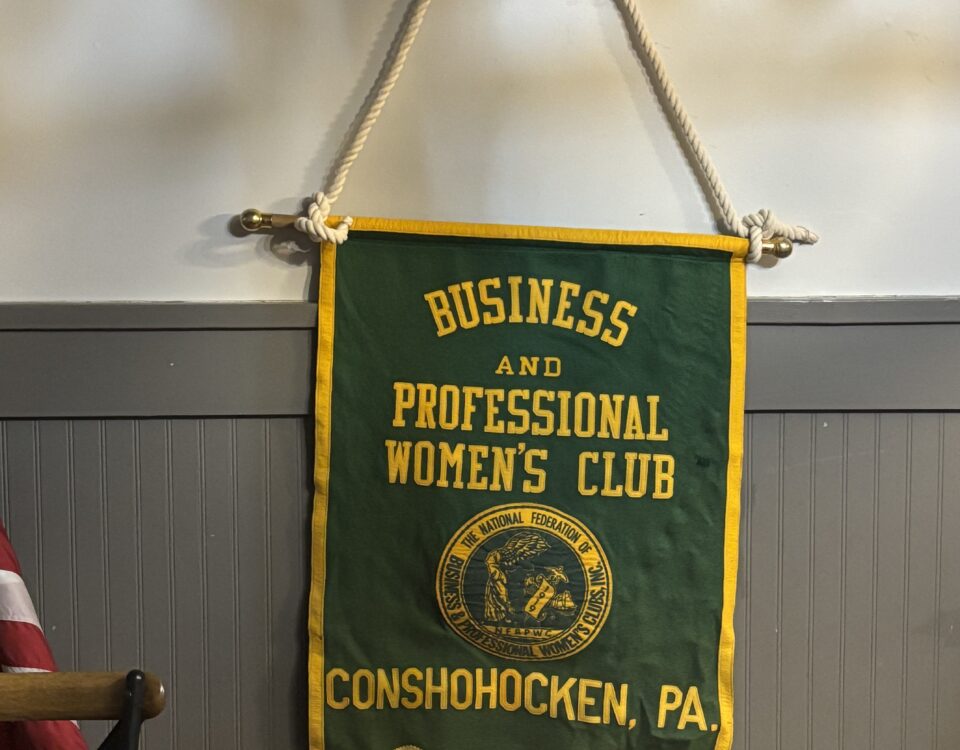
The Colonial Neighborhood Council By Jack Coll
October 23, 2017
Memories of Conshohocken’s Professional Football Teams
March 3, 2018Celebrating Black History Month; In Conshohocken, That’s Easy

Celebrating Black History Month
In Conshohocken, That’s Easy
By Jack Coll
February 12, 2018
Over the years I’ve written Black History articles in an effort to commemorate “Black History Month,” celebrated throughout the country during the month of February every year.
I’ve written about Martin Luther King Jr., Rosa Parks, Malcolm X, Bobby Kennedy, assassination’s, protests and church bombings and all the other ugly things that go hand-in-hand with the 1960’s. For those of us who have lived, worked or participated in the borough of Conshohocken throughout the years we never had to look far for our local African American leaders. I’ve researched and written about Conshohocken’s first African American resident Edward “Ned” Hector.
Ned Hector was a Revolutionary War solider who mustered in on March 10, 1777 and was one of 5,000 Black American Patriots who signed on with the Continental Army. Hector served in the state militia called Proctor’s Third Pennsylvania Artillery and was a Private in Captain Hercules Courtney’s Company, Third Pa. Artillery in the Continental Line. He participated in at least two key battles during the war. Hector fought in the Battle of Brandywine on September 11, 1777 and in the Germantown
Battle on October 4, 1777.
Following the war Hector settled in Conshohocken with his wife and children. The family lived in a wood cabin on the corner of what would become Harry Street and Barren Hill Road. In 1853, just three years after the borough of Conshohocken’s incorporation and nearly 20 years after Hector’s death, the Borough Councilman voted to change the name of Barren Hill Road within the borough limits from Barren Hill Road to Hector Street in honor of the borough’s first African American resident and war hero.
It should be noted that the fifteen councilmen were all white males, many of whom knew Hector before he died. It was the first such honor in the United States, naming a street in honor of a black man.
By 1876 St. John’s African Methodist Episcopal Church had established a congregation sending out a message that men, women and children of color were free to live worship and work in and around the borough of Conshohocken. Early worshippers of St. John’s Church gathered at Stemple’s Hall once located on Forrest Street between Elm and Hector Street.
Most of Conshohocken’s early African American residents found employment at the Alan Wood Steel Company or as domestic servants for the borough’s wealthy residents most of whom lived along Fayette Street.
Nearly a half a century later in 1925, St. Paul’s Church was formed in the former James Hall Carpet Mill once located on Bliss Street in West Conshohocken. The location was later the Inn of the Four Falls Restaurant. St. Paul’s Church became the second African American Church with the borough that featured about a dozen churches at that time.
Since the establishment of these churches African American residents had flocked to Conshohocken just like the Itialians, Germans, Irish and Polish residents who had settled in the borough before them.
Conshohocken has had a lot of special residents over the years, we had James and Alan Wood along with other members of Wood family. John Elwood Lee along with members of the Lukens family, Davis and Moore family’s.
I’ve researched and written about many, many family’s over the past thirty five years and in my opinion Reverend Marshall W. Lee Pastor of St. Paul’s Church was Conshohocken’s most prominent citizen in this borough for more than half a century. Reverend Lee perhaps did more for the citizens of Conshohocken and beyond than any other Conshohocken citizen in the history of the borough. Reverend Lee was born in Virginia in 1886, his father, Abram was born a slave in 1847, and he witnessed the Civil War and had seen President Abraham Lincoln in person. Abram Lee later became a Reverend and practiced in Roxborough, Philadelphia. Abram’s son Marshall was instrumental as the chairman of the Montgomery County Housing Authority and helped bring the Marshall Lee Towers located at Third Avenue and Fayette Street. Rev. Lee also served as President and Vice President of the borough’s Visiting Nurse Association and Treasurer of the Conshohocken Borough Sewer Authority. He was a Director of the Montgomery County Red Cross Association and a Director of the Tuberculosis Society of Montgomery County. During the Great Depression Lee served on a committee that helped feed the needy. Lee’s life’s accomplishments go on for pages.
One of Rev. Lee’s daughters Olive Lee Banks was a trail-blazer and thrived following her father and grandfather’s footsteps becoming the first African American female to work at the Budd Company and worked with the Hale and Kilburn Company designing all-steel passenger rail-cars for the Pullman Company. Olive left the Budd Company and later worked for the Federal Government at the Philadelphia Signal Depot and in 1949 she joined the Montgomery County Planning Commission staff.
It came as no surprise in the summer of 1962 Olive became the first African American official of the Montgomery County Republican Committee.
Reverend James Groves, his daughter Darlene Groves Davis, Frank Morgan and Lucius Carter are a few of the borough’s African America residents who have become great influences in the borough’s African American community.
Former Philadelphia Mayor John Street lived on First Avenue in the borough, attended and graduated from Conshohocken High School. Other prominent African American influences included former President of Conshohocken borough council James “Ike” Griffin, Reid Todd, a wonderful and talented artist, George Bland, Conshohockens First African American Police Officer, Councilman Hector “Bunky” Nobel, Louis Mason who was the first African American to serve on the borough’s Civil Service Commission and a few of the founding members of the Colonial Neighborhood Council including Carrie Duckett, Lucille Mason and Fannie B. Johnson. Let’s not forget the borough’s first African American firefighters who served at the Washington Fire Company for years back in the early part of last century Bob and Reid Nixon.
Conshohocken is full of African American influences and prominent residents. In honor of Black History month we salute all of our residents.
For more information and the history of Conshohocken’s African Americans in Conshohocken check out the book written by Jack and Brian Coll, Conshohocken & West Conshohocken, People, Places and Stories Volume Two. Several copies remain for sale at Coll’s Custom Framing located at 324 Fayette Street.

